The Future of Design Is Designing for Disability
Accessibility should not be a grudging afterthought. With planning, it can lead to elegant, beautiful, and engaging art.
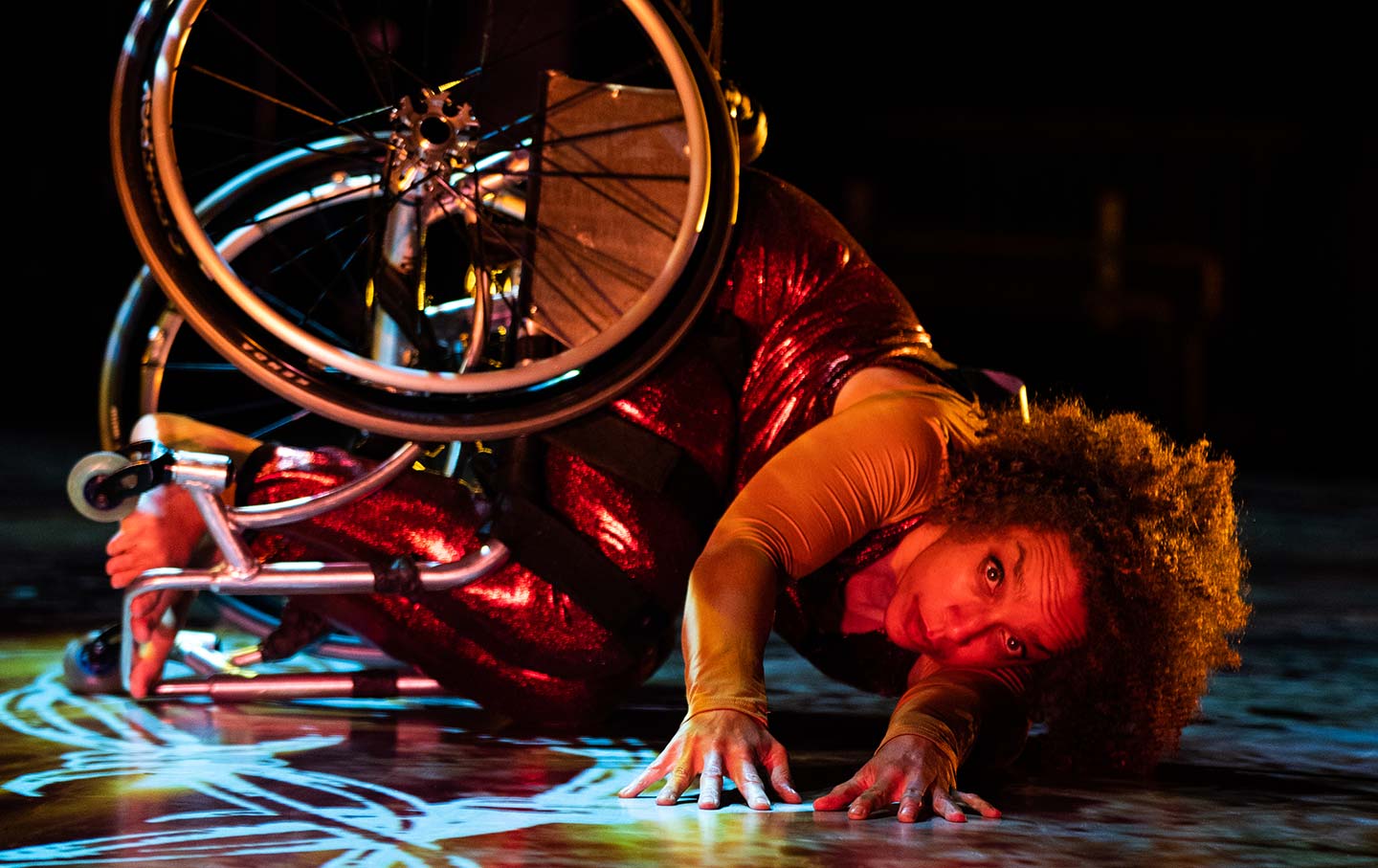
Alice Sheppard, a multiracial Black woman with coffee-colored skin and short curly hair, crouches onstage, legs and wheels curled toward her core, arms reaching toward the camera. Dappled purple and blue lighting covers Sheppard and the floor, as a projection of white and yellow barbed wire extends from under her. She peers intently beyond the camera, eyebrows raised.
(Robbie Sweeny / Courtesy of Kinetic Light)On a trip to SFMOMA many years ago, I wandered through the museum with a friend, who is blind, and her wife. The two of us who were sighted took turns describing the art. Other patrons (and guards) glared at us as we tried to conjure up the works with our words. And then we rounded the corner into a Carl Andre exhibition, featuring Copper Zinc Plain, an expanse of copper and zinc squares laid out in a checkerboard on the floor. Unlike the rest of the gallery, visitors were explicitly invited to step onto Andre’s artwork. As we described the work, my friend could walk on it, feeling the texture beneath her feet. Andre’s artistic choices, perhaps by accident, had made his work beautifully accessible.
According to the Centers for Disease Control and Prevention, approximately 25 percent of the US population is disabled, and with long Covid and an aging population, this share is increasing. We need functional design that allows people to interact with their digital or physical environments with as few barriers as possible. The Rehabilitation Act of 1973 set out some accessibility mandates, but the Americans with Disabilities Act of 1990 (ADA) introduced a new era of accessibility. Yet the continued roadblocks to access highlight cultural attitudes about who belongs in society.
Conversations about accessibility tend to focus on practicality, with a hint of grudging provision of tools people need to meet their needs via accommodations. “Accommodation” implies a sort of permission, something granted to another person. It suggests that there’s something abnormal about a disabled person that requires extra effort. In the case of the ADA, people fighting accessibility requests in some contexts can cite the “undue burden” standard, which states that if something is too costly or technical to implement, it can be denied, with an alternate accommodation proposed instead. Disabled people under this framework become a nuisance to be checked off: install HVAC, finish flooring, equip elevator.
In recent years, there has been a shift toward universal design, which posits that all spaces should be designed to be as useful as possible to the greatest number of people. Curb cuts are often cited as an example: They allow wheelchair users to enter the crosswalk, but they also benefit parents with strollers, travelers with luggage, delivery people with hand trucks, people carrying heavy loads who might trip on a curb, and many others. Universal design on its face has obvious merits, and designing with everyone in mind is a significant improvement over reluctantly shoehorning in access features, but it does not entirely meet the needs of disabled people.
The focus on universality sometimes inadvertently erases the disabled people who drove earlier movements of accessible design. “Design for everyone,” as universal design is sometimes pitched, cannot actually be a design for all. In reality, there are sometimes access conflicts. A space kept bright and airy for claustrophobia or those with low vision can be hell for a migraineur. A service dog can create problems for someone with a severe allergy. A hybrid meeting accommodating employees with long Covid can be hard for Deaf employees to follow. And building for disability is not so simple as instinctual good ideas and assumptions about what disabled people might like in a built environment. It requires a design practice that integrates training and experience into its decision making.
There is, however, a third way for thinking about accessible design, one in which accessibility becomes art in its own right—a creation that is elegant, beautiful, and engaging. A design that foregrounds disability identity and culture rather than treats them as an afterthought.
This is not a new idea. The Kenneth and Phyllis Laurent House, completed in 1952, is one of Frank Lloyd Wright’s most stunning designs, incorporating the features that became hallmarks of his work. It blends in with the natural environment, features elegant lines, offers artful views through large windows, and is littered with design details. It’s also fully accessible by the standards of the time, built on commission to accommodate Ken’s wheelchair.

With limited guidance on what accessible homebuilding might look like, Wright thought about how a wheelchair user might navigate the space. He didn’t just integrate it into the art: He made accessibility itself the art. One of the most stunning examples is the array of windows that curves along the back of the house, providing a view of outdoor gardens and a walkway. They are also floor to ceiling, allowing people to enjoy from any height. The indoor spaces and door openings have ample clearance for a wheelchair; it’s woven into the proportions of the home rather than awkwardly wedged in. The built-in seating includes spaces for wheelchair users to participate in conversation—no more hasty rearrangement of chairs or resignation to sitting in the corner. There are no glaring utilitarian access features that jar the viewer. Access, Wright proves, does not need to be ugly or intrusive; it can be seamless.
Accessible architecture, with an aging and increasingly disabled population, offers opportunities to create functional art and spaces, but it can also showcase failure. In September 2019, Curbed New York waxed rhapsodic about a new library at Hunters Point, calling it “a wonderful addition to the neighborhood.” Ten days later, they regretted to inform readers that it had an “accessibility problem” that became a target of a lawsuit (which spawned more lawsuits from the city, demanding to know why a significant access issue wasn’t caught during development and construction). Some aesthetically pleasing stepped seating was not accessible to wheelchair users or others with mobility impairments, sending a signal that these communities were not welcome at the library. The debacle highlighted the fact that access is frequently a second thought even 33 years after the ADA.
Access can be art. Kinetic Light, a disability arts ensemble, produces performances “at the nexus of access, queerness, disability, dance, and race.” In Descent, dancers Alice Sheppard and Laurel Lawson perform on a stage that’s actually a ramp, and the ramp itself becomes a character in the narrative. It’s art that explicitly engages with accessibility, produced in the context of a production company that also takes access needs at events extremely seriously. Kinetic Light offers 3-D printed models of the set for blind people to touch and has a detailed audio description that tells blind audience members what is happening. The team also uses ASL interpreters, artists, and others to develop an experience that is beautifully accessible, and one that is constantly evolving in response to feedback. The performances are constantly shifting understanding of what accessibility looks like. Even the team’s image descriptions for publicity stills are artful compositions, not just bland descriptions of what is in the image.
“We’ve created ‘Descent’ specifically to celebrate disability arts and culture and to demonstrate how disability is an artistic and creative force,” Sheppard said in 2018. The disability-led dance company doesn’t identify as “integrated dance,” in which dance performances may be modified for disabled bodies or choreographed for a mix of dancers, but as a standalone artistic entity in which disabled dancers develop choreography for their bodies. It is disabled dance, its own art form, as Sheppard wrote for The New York Times in 2019.
This is a form of accessibility that is not just about logistics and a list: It is a celebration of disability culture through the provision of access elements, many of which are core parts of the production. A similar ethos can be seen in Alt Text as Poetry, a project by Bojana Coklyat and Finnegan Shannon, which posits that alternate text can be something deeper than a description.
Good alt text features brevity, tapping into the poetic tradition, and it can also be shaped by word choices and other stylistic decisions that affect how people interact with the art. Coklyat and Shannon also review alt text, as for example in a blog entry that comments on the ways race can be described, or not, in alt text, and how decisions made by the describer can affect the reader’s understanding of the media.
Popular
“swipe left below to view more authors”Swipe →One alt text that Coklyat reviews reads:
First pic is Bitches, a grey and white cat doing her best to take up as much room as she can on the couch. In her case, wider than she is long…sitting on her hind legs, spread belly out, with an assertive stare daring you to try and sit there.
Coklyat’s review states, “The tone of the description feels really in sync with the image, writing ‘with an assertive stare, daring you to sit there.’” The alt text paints an evocative mental image that conveys not just the mechanics (“a grey and white cat sitting on a couch”) but the mood of the photograph.
Accessibility can manifest as art in a scent garden, where layers of plantings offer an olfactory experience to visitors, not just a visual one. It can come in a ceramic bowl with textured features that offer haptic feedback. A ramp provides accessibility, but also shapes a space and can invite visitors to experience navigation in a new way. A special occasion menu can use a series of dishes that conform with dietary restrictions to tell a story, not just highlight lack, as I recently experienced at a dinner party. A prosthesis can be a conscious, functional work of art, like Aimee Mullins’s Alexander McQueen legs.
It is critical to avoid forms that imperil, frustrate, or disserve disabled people. But accessibility can also challenge nondisabled people, or those who don’t share a given impairment, to think about how they view the disability community. A Deaf theater production can decide whether it wishes to offer captions or interpretation as accommodation to people who do not use sign language, for example, in a reversal of traditional attitudes. Or an exhibition can be designed from the perspective of little people, with all features comfortably accommodating their needs—but not necessarily those of people of average stature.
Accessibility doesn’t have to, and shouldn’t, be a burden. Art invites us to explore experiences beyond our own and to immerse ourselves in them. Disability-led projects—such as Kinetic Light—offer incredible opportunities to rethink the meaning of access and to explore new ways of presenting it. Yes, ensuring routine access should take priority over larger artistic opportunities. But I would much rather talk about the language in the alt text itself than whether alt text should be present, just as I want to be able to assume that a home is accessible and focus on how the architect incorporated disability into the building’s very design and structure. Accessibility should include something beyond accommodation and into a source of inspiration, a driver of creativity, and even something playful and fun. Accessibility need not be a constriction, as many seem to view it. Many disabled people spend their lives navigating around a world that is hostile to them. Access as art won’t erase disablism or solve the myriad problems that the community faces. But it can change the perceptions of those aren’t disabled. It can open up a conversation about disability arts and what happens when accessibility is more than an add-on. And it can create more spaces of shared beauty.
Disobey authoritarians, support The Nation
Over the past year you’ve read Nation writers like Elie Mystal, Kaveh Akbar, John Nichols, Joan Walsh, Bryce Covert, Dave Zirin, Jeet Heer, Michael T. Klare, Katha Pollitt, Amy Littlefield, Gregg Gonsalves, and Sasha Abramsky take on the Trump family’s corruption, set the record straight about Robert F. Kennedy Jr.’s catastrophic Make America Healthy Again movement, survey the fallout and human cost of the DOGE wrecking ball, anticipate the Supreme Court’s dangerous antidemocratic rulings, and amplify successful tactics of resistance on the streets and in Congress.
We publish these stories because when members of our communities are being abducted, household debt is climbing, and AI data centers are causing water and electricity shortages, we have a duty as journalists to do all we can to inform the public.
In 2026, our aim is to do more than ever before—but we need your support to make that happen.
Through December 31, a generous donor will match all donations up to $75,000. That means that your contribution will be doubled, dollar for dollar. If we hit the full match, we’ll be starting 2026 with $150,000 to invest in the stories that impact real people’s lives—the kinds of stories that billionaire-owned, corporate-backed outlets aren’t covering.
With your support, our team will publish major stories that the president and his allies won’t want you to read. We’ll cover the emerging military-tech industrial complex and matters of war, peace, and surveillance, as well as the affordability crisis, hunger, housing, healthcare, the environment, attacks on reproductive rights, and much more. At the same time, we’ll imagine alternatives to Trumpian rule and uplift efforts to create a better world, here and now.
While your gift has twice the impact, I’m asking you to support The Nation with a donation today. You’ll empower the journalists, editors, and fact-checkers best equipped to hold this authoritarian administration to account.
I hope you won’t miss this moment—donate to The Nation today.
Onward,
Katrina vanden Heuvel
Editor and publisher, The Nation
More from The Nation

Can Americans Really Make a Free Choice About Dying? Can Americans Really Make a Free Choice About Dying?
In a country that treats disabled people like expensive burdens and that teaches people to hate and fear disabilities, activists argue that true bodily autonomy is not possible.
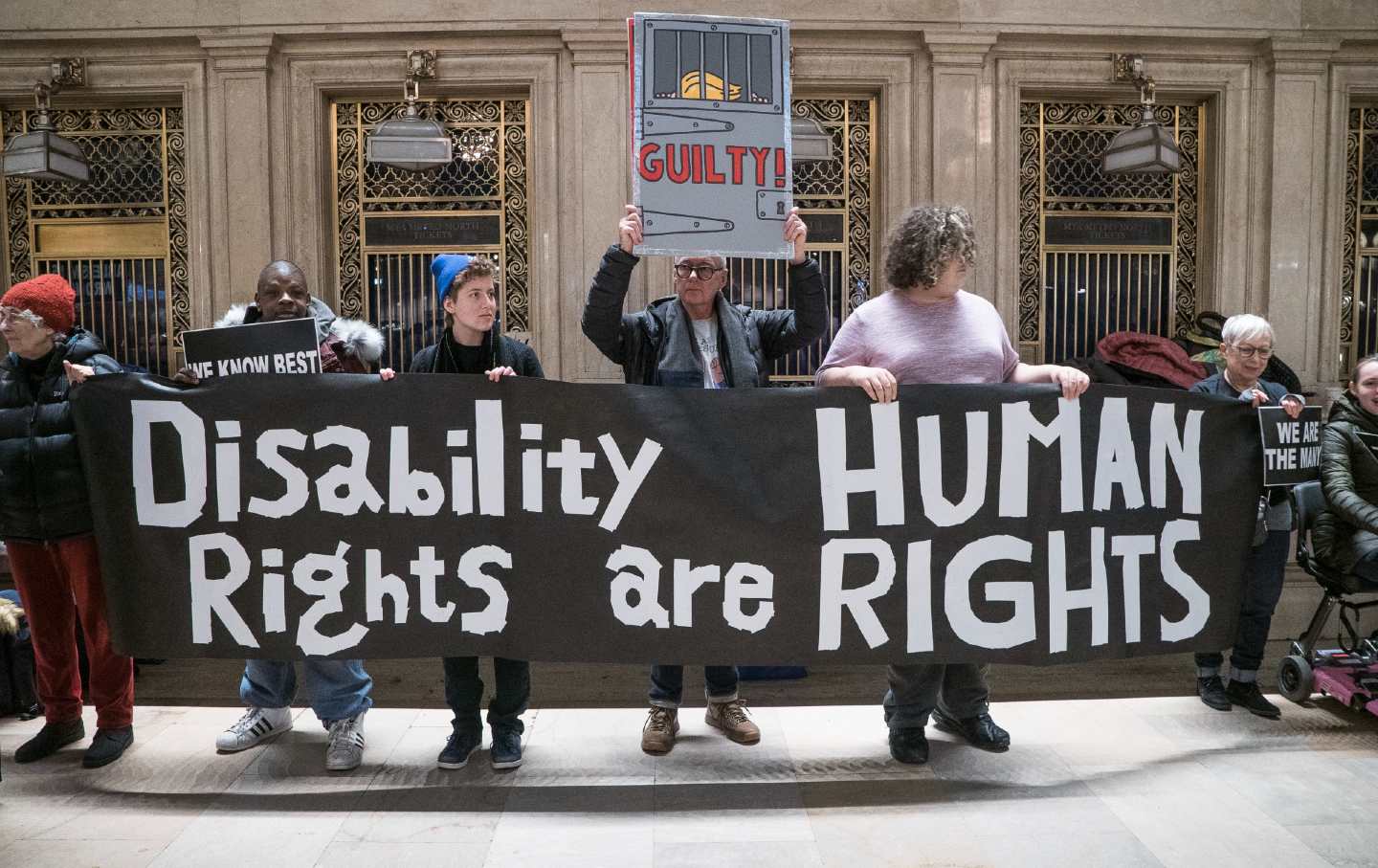
Disability Is Always Someone Else’s Problem Disability Is Always Someone Else’s Problem
Why I’m not celebrating Disabilities Awareness Month.
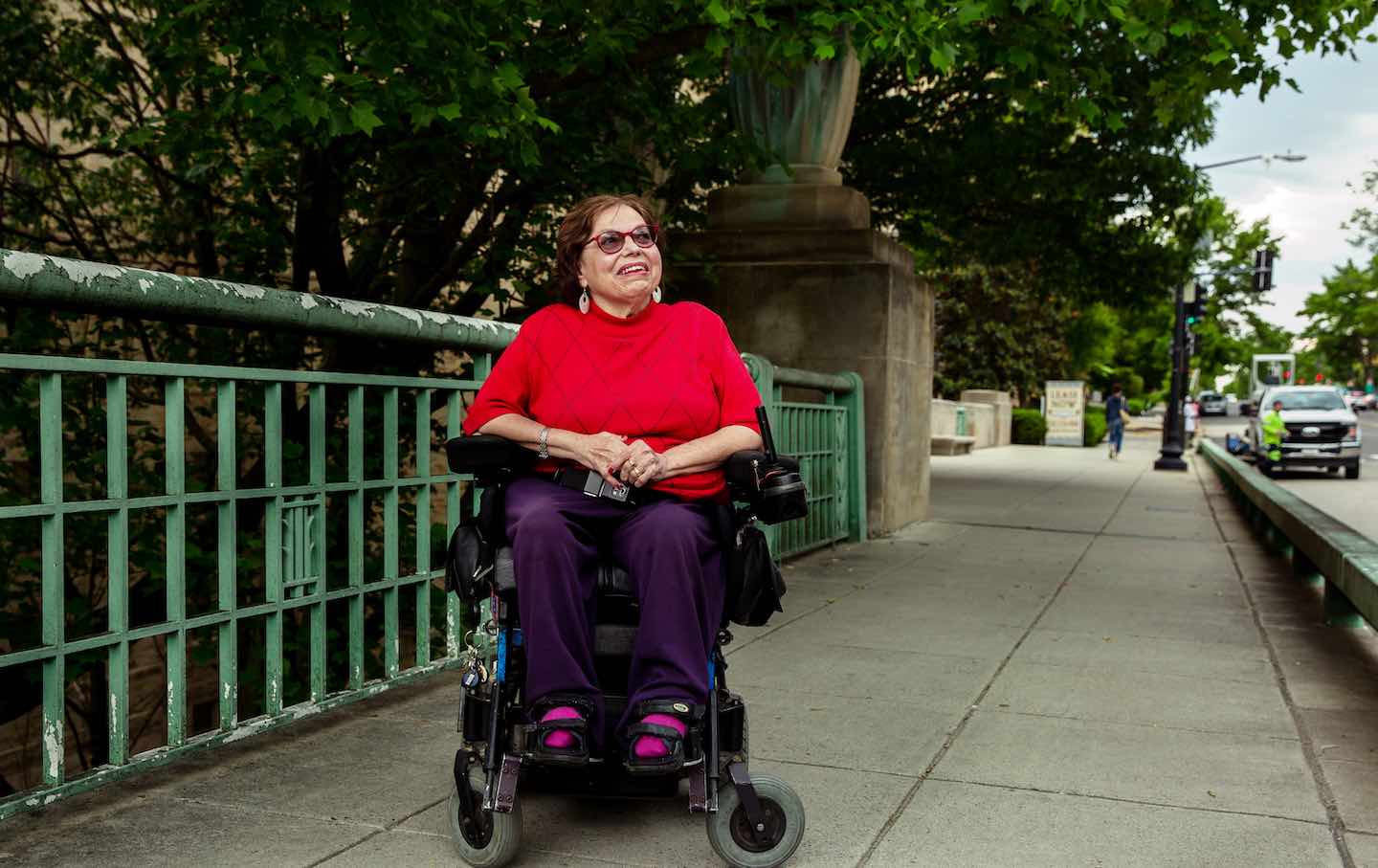
“Work Until You Die” Is Not a Retirement Plan “Work Until You Die” Is Not a Retirement Plan
For Judith Heumann, and countless people with disabilities, “work until you die” was the only option. It’s past time to change that.
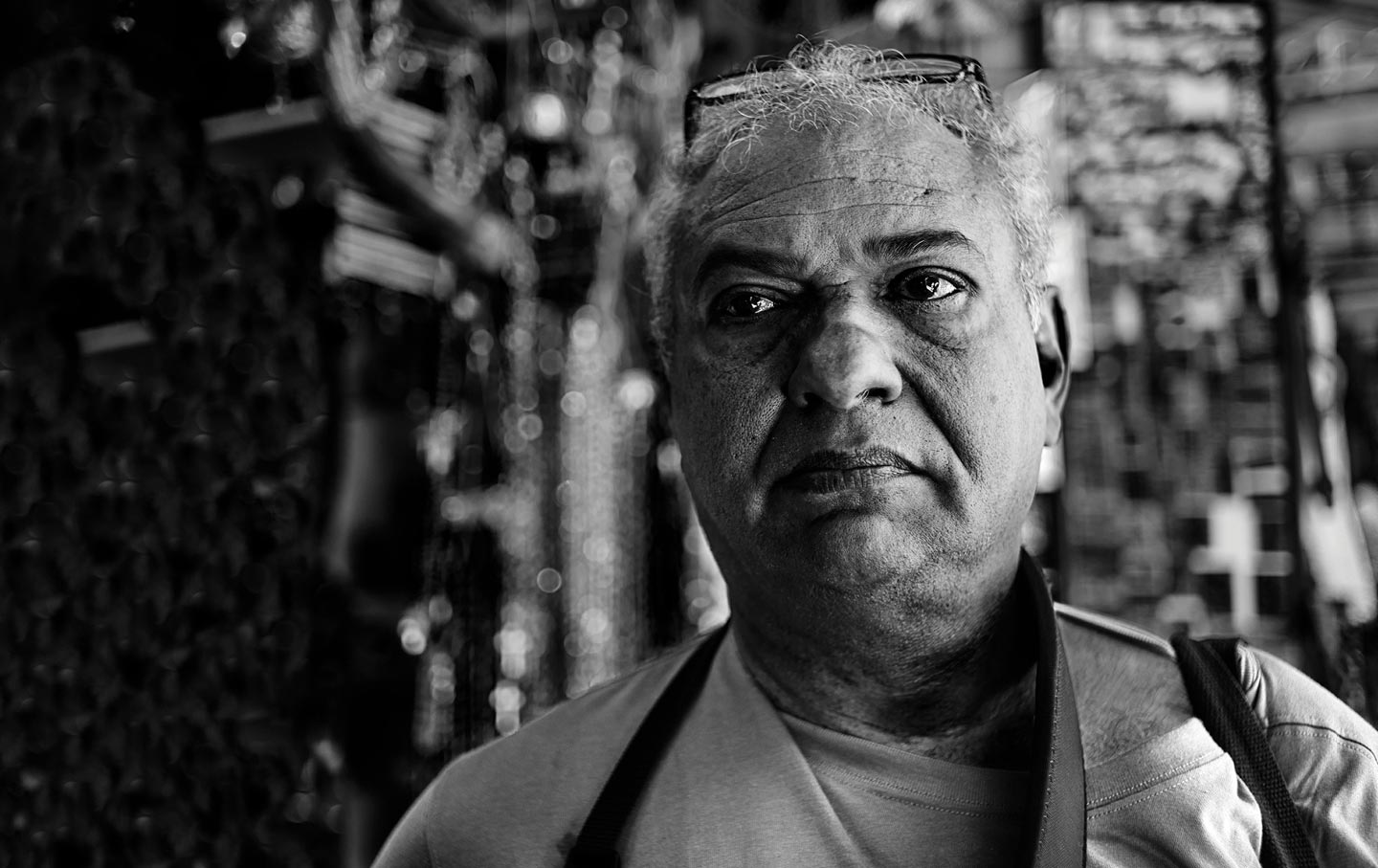
Was This Professor Fired for Having Tourette Syndrome? Was This Professor Fired for Having Tourette Syndrome?
We want to ensure harassment-free climates in schools and workplaces, and we want to protect the rights of people with disabilities. What happens when these imperatives collide?
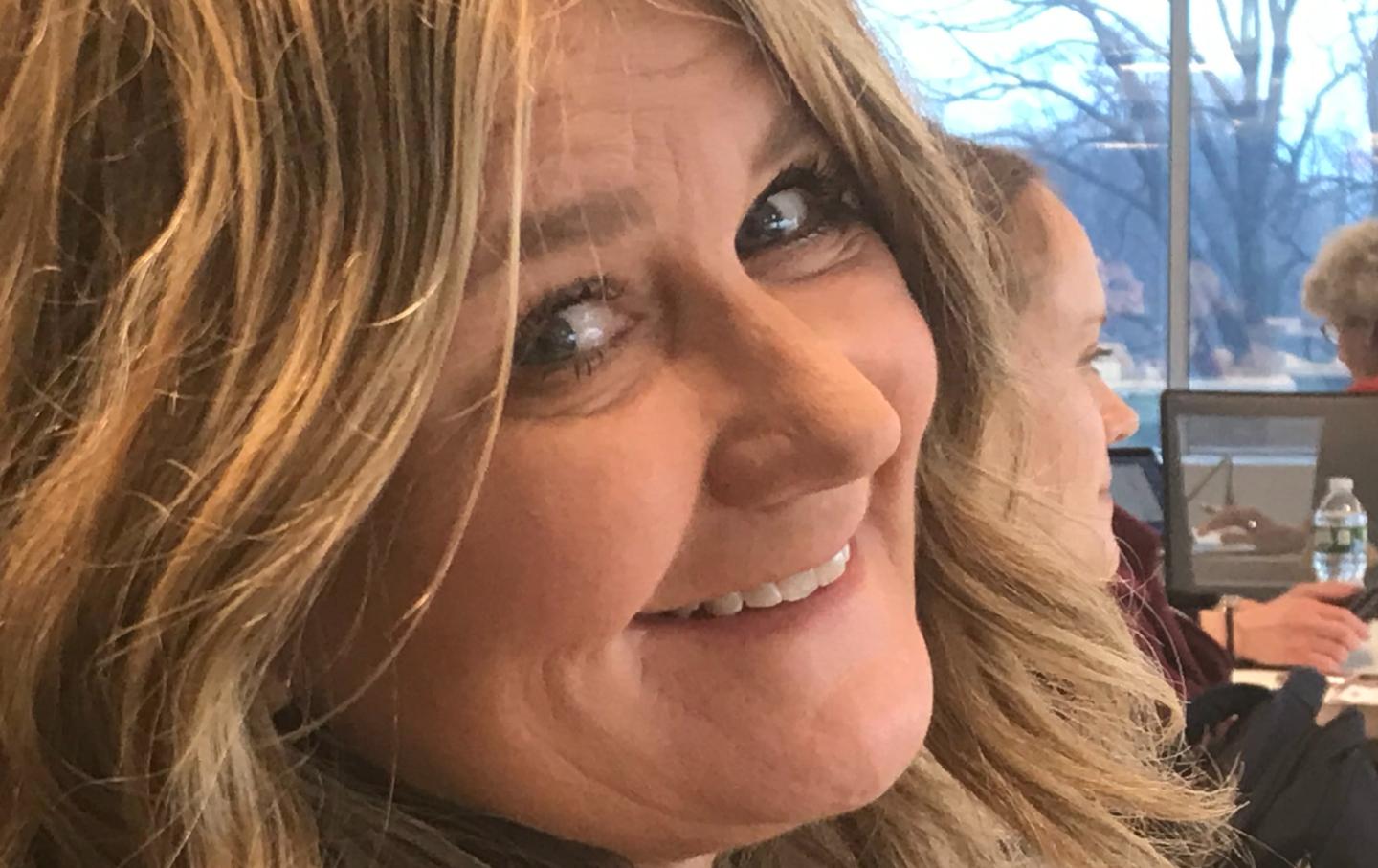
Meet Sandy Morris, the ALS Heroine Hardly Anybody Knows Meet Sandy Morris, the ALS Heroine Hardly Anybody Knows
Anthony Fauci understood that making people like Sandy who are living with a disease part of the research process leads to better science. But the rest of the NIH still hasn’t gott...
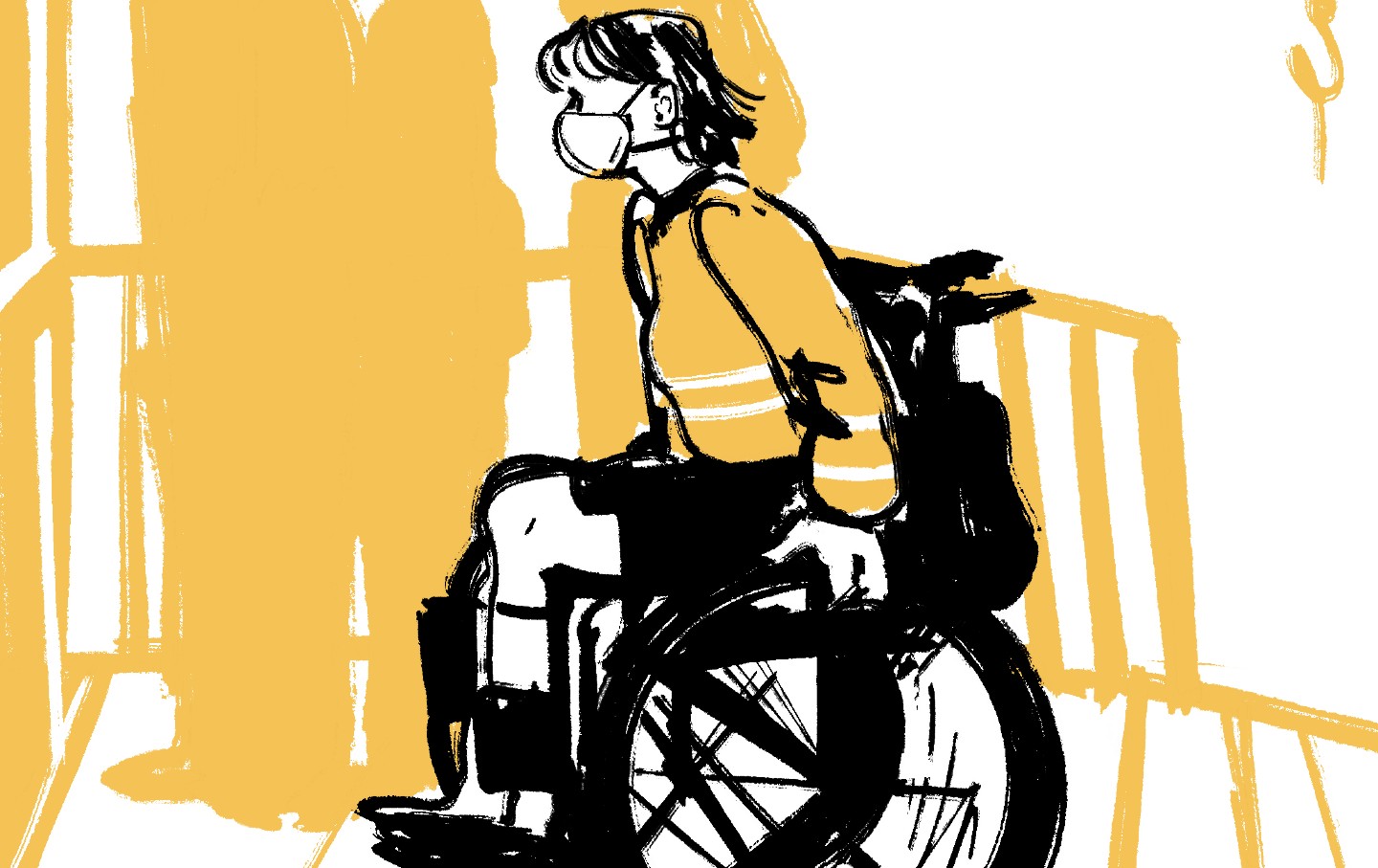
Wheelchair Users Block the Seoul Subway as the Right Takes Power Wheelchair Users Block the Seoul Subway as the Right Takes Power
The hostility of the conservative party has pushed the disability-rights movement to the center of a larger fight for minority groups in South Korea.


